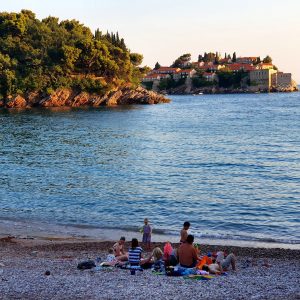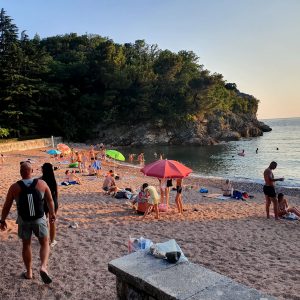TRAVELOGUE by Robert Čoban
“Doughnuts, corn, figs, doughnuts”, the strong voice of a local woman, built like the typical Mediterranean, has been echoing for more than a decade along the beach of the Maestral Hotel in Pržno. This year, she is not accompanied by her daughter, who always helped her mother and carried “goods”: “She got married, she left, she doesn’t want to work anymore!” the woman says as she pushes the cart loaded with fruit, freshly baked doughnuts and corn on the cob.
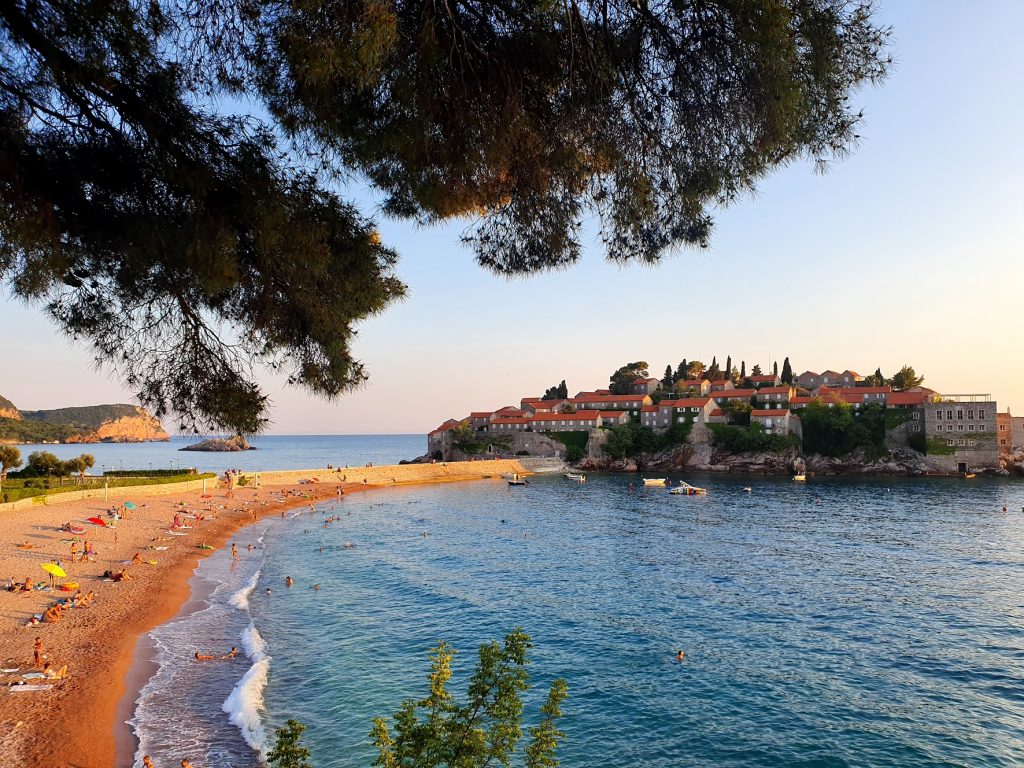
The problem of labour shortage does not only bother the saleswoman from Pržno. There aren’t enough waiters, cooks, restaurant support staff and security in bars and this is prevalent throughout the Montenegrin and Croatian coastline. The situation is no better in Belgrade or Zagreb because everyone from the hospitality sector went to work on the coast for much higher salaries.
This summer, hotel complexes and restaurants in Saint Stefan and Miločer will not be experiencing that kind of trouble, because they welcomed the summer season closed up, with chairs resting on the tables, signalling closure.
What about the beaches? People say that the current situation is reminiscent of Havana on January 1, 1959, when dictator Batista fled to the Dominican Republic, on a plane loaded with crates full of gold. The people used to flock to the casinos, hotels and luxury beaches – Queen’s Beach, King’s Beach and Saint Stefan Beach. When I strolled down these beaches last week, there were brimming with tourists. “People happened to them”, as some would say. There is no trace or mention that these were the places where globally popular celebrities like Leonardo DiCaprio, Sophia Loren, Bobby Fischer, Boris Spassky, Claudia Schiffer, Elizabeth Taylor, Kirk Douglas, Andrea Bocelli, Sylvester Stallone, Robert De Niro and others spent their summers, lounging at the famous pool at the back of the island or on the hotel’s private beach in front of it.
Still, this is not Cuba in 1959. There was no revolution in Montenegro and even the President is still the same… What happened then?
“Montenegrin President Milo Djukanović said recently that only a totally irresponsible government would turn the most outstanding part of the Queen’s Beach’s tourist offer into a real eyesore“
Namely, after the leaseholder, Adriatic Properties, and the hotel operator Aman Resorts announced that they would not open Saint Stefan and Miločer hotels this season, people could freely access the beaches which had no beach furniture. Also, spas, restaurants and cafes behind the beaches remained closed. These are exclusive locations that have been reserved for hotel guests for decades, who were willing to pay thousands of euros for a one-night stay. People who were not hotel guests could use the beaches but for a huge price so, for instance, a set of deck chairs with a parasol cost up to 150 euros a day. When I took a walk there last year, deckchairs were spaced out five metres away from each other because of the epidemiological situation.
The leaseholder’s decision to close the hotels was preceded by several protests by locals early this year which received support from the Budva authorities when the protesters removed the fences on the road leading to the hotels and beaches. They opposed the construction of new facilities in the new Kraljičina Plaža Hotel, financed by Adriatic Properties, and demanded unconditional access to the leased hotel beaches.
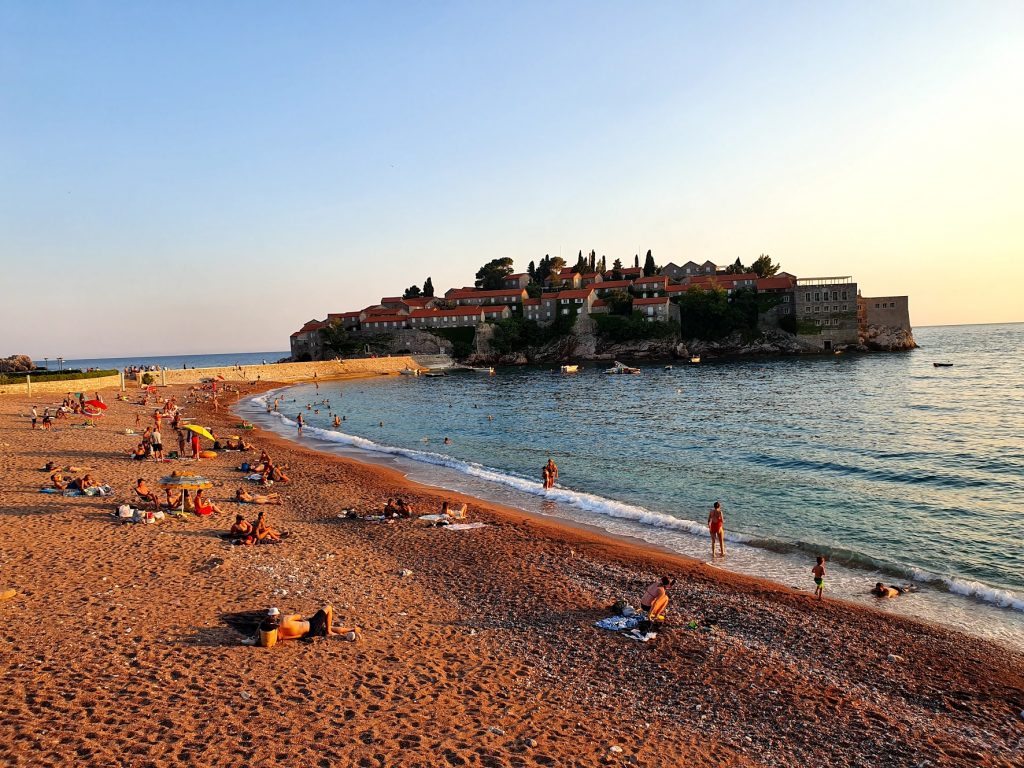
Montenegrin President Milo Djukanović said recently that only a totally irresponsible government would turn the most outstanding part of Queen’s Beach’s tourist offer into a real eyesore, and allow for Montenegro to lose an investor. Djukanović also said: “You have probably seen on social media what the most outstanding part of the Queen’s Beach looks like – brimming with street beer and kebab vendors who sell their goods for one euro.” Last week, social media were inundated with photos of a man who brought a rolled-up carpet to the Saint Stefan beach.
And how did the story about tourism on Saint Stefan even start? “In the 1950s, the idea of turning the fishing village of Saint Stefan into a luxury town/hotel came from the top Yugoslav politicians. This idea was first initiated by the then high federal official Edvard Kardelj. His idea was wholeheartedly supported by Blažo Jovanović, back then the top politician in Montenegro, as well as the famous painters Petar Lubarda and Milo Milunović,” writes a long-time Montenegrin tourist worker and expert Vlado Duletić in his book “Budva, from Myth to Reality”. None of the actors in this story is alive anymore, not even the book’s author. And their dream seems to have died, too, along with them.
The impression is that the municipal and state authorities in Budva and Montenegro did not do their best in many segments, especially when it comes to tourism. Budva used to be known for its mass tourism, on the one hand, and on the other, for the hotels frequented by the world’s elite. Noisy open-air discos were the backbone of mass tourism, because of which Budva received numerous pejorative nicknames such as “Leskovac-on-Sea”. Two years ago, all six large open-air discos were razed to the ground – Trokadero, Rafaelo, Paris, Ambiente, Maltez and Miami, just like 14 fast-food restaurants. Like it or not, these discos were the main bait for tens of thousands of young people from all over the region who came to Budva for fun. Close by, there was a large outdoor amusement park where I always had crazy fun with my daughters driving so-called crash cars. Now, there is no such amusement park either – someone came up with the ridiculous idea to relocate it to the hot, stuffy hall of the Adriatic Fair, where you can almost see with the naked eye the coronavirus flying through the air.
“The impression is that the municipal and state authorities in Budva and Montenegro did not do their best in many segments, especially when it comes to tourism”
The second segment of Budva – elite tourism – which was based on the aforementioned hotel’s Saint Stefan and Miločer and Queen’s and King’s beaches – has also collapsed because the facilities are closed and the beaches have been given the status of ‘unregulated’ instead of ‘exclusive’.
If you swim a hundred metres away from the beach in Pržno and turn around, you can see a giant concrete structure emerging from the otherwise crowded streets of this once quiet fishing village – these are the outlines of the future Kraljičina Plaža Hotel, which construction is financed by Adriatic Properties, which I mentioned at the beginning of this story. Covering the coast in concrete, which is something that no resort in Italy or Greece would do, is the main malady of Montenegrin and partially Croatian tourism. This is, in part, the same concept that saw Kopaonik and Zlatibor being covered in concrete buildings instead of pine and spruce forests. Every reasonable person sees the big issue here – investors and corrupt officials, who issue investors with building permits, could not care less who will come to spend their summer or winter in such places. The money these investors and local officials earn here will be used to send their children to school in ‘normal’ countries and buy real estate in London, Vienna or Trieste, places where everything is tightly regulated.
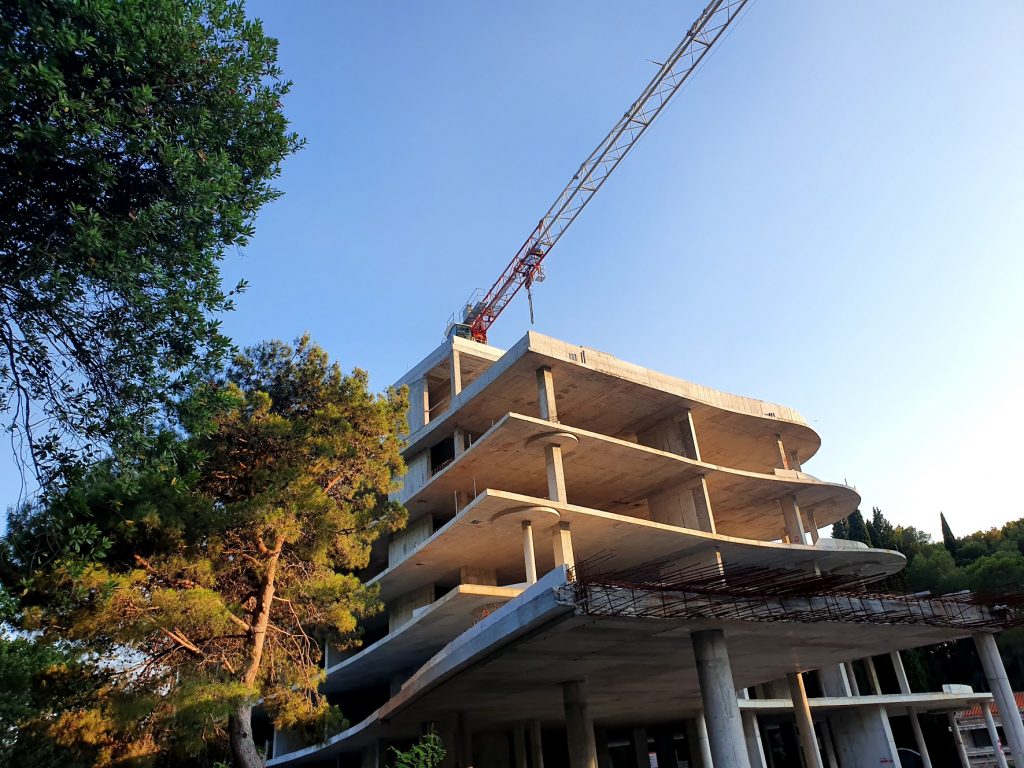
By the way, this is not the first downfall of Saint Stefan in its 61-year-long hotel history. The first downfall happened in 1991 when, due to the war in Yugoslavia, the resort did not welcome the usual international tourist elite for which it had been opened in the first place. The second downfall came a year later when Saint Stefan was leased to Jezdimir Vasiljević, the owner of the Jugoskandik Bank, who defrauded numerous people in Serbia and Montenegro. After the collapse of the bank and chief Jezda’s empire, Saint Stefan embarked on a gradual path of recovery. I visited it for the first time in 1997, and then, although it looked like a worn-out plush robe, it still had some glamour. All that was missing was the casino scenes from the James Bond movies, while the roulette was mostly played by local mobsters or people who aspired to become them one day. Across the island, Bogoljub Karić paid for a real feast for his guests at the Pod Maslinom restaurant, which included fillets of a shark, which he, by his own admission, had caught.
“The last time we, mere mortals, could spend the night on Saint Stefan was in the summer of 2006.”
I spent a few days on the island with my wife Sandra who was, at that time, pregnant with our daughter Indija. My favourite little pool at the back of Saint Stefan was covered in dried pine needles that no one bothered to clean up. Still, it had timeless charm. The following year, 2007, the hotel was leased to Aman Resort for 30 years. Subsequently, the lease was extended to 42 years and the contract was taken over by Adriatic Properties with Aman continuing to run the hotel business. The hotel opened in 2013 and a year later, Jelena and Novak Djoković had their glamorous wedding there. I managed to negotiate exclusive photos from that wedding to appear in our Hello! magazine. This issue, from July 14, 2014, will be remembered as having the biggest number of sold copies out of all Serbian weeklies in the 21st century.
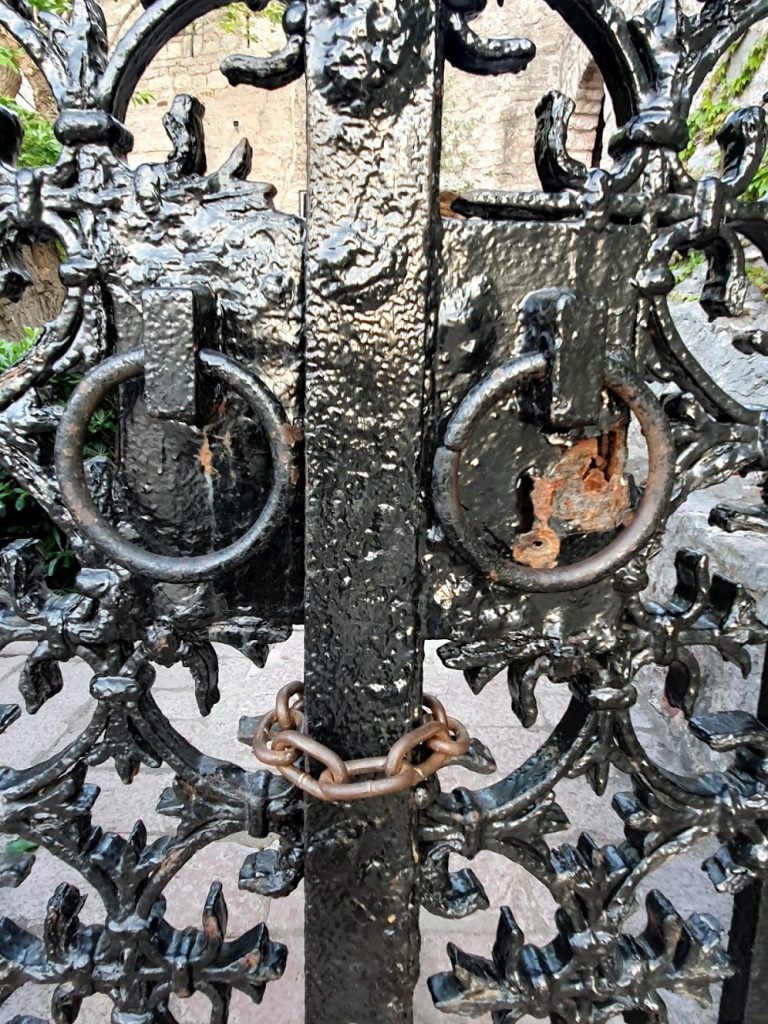
We passed by the beach, where, truth be told, we did not see any kebab vendors from Djukanović’s statement, although it is quite possible that some visitors took them together with fresh tomatoes. Walking down a narrow strait that connects the island with the mainland, we reach the walls of Saint Stefan, the former fishing village of Paštrović. A white stone tablet dedicated to the WWII soldiers and the victims of fascist terror was put there on the occasion of the 10th anniversary of the liberation at a time when the locals still lived on the island. The letters have faded out, erased by storms, both meteorological and historical, so it is almost impossible to read what is written on it. To the left of the plaque, there is a wrought-iron gate painted black, through which you enter the labyrinth of Saint Stefan’s streets. The gate is now closed, while a lock wrapped in a thick chain patiently waits for the Saint to awaken again.
